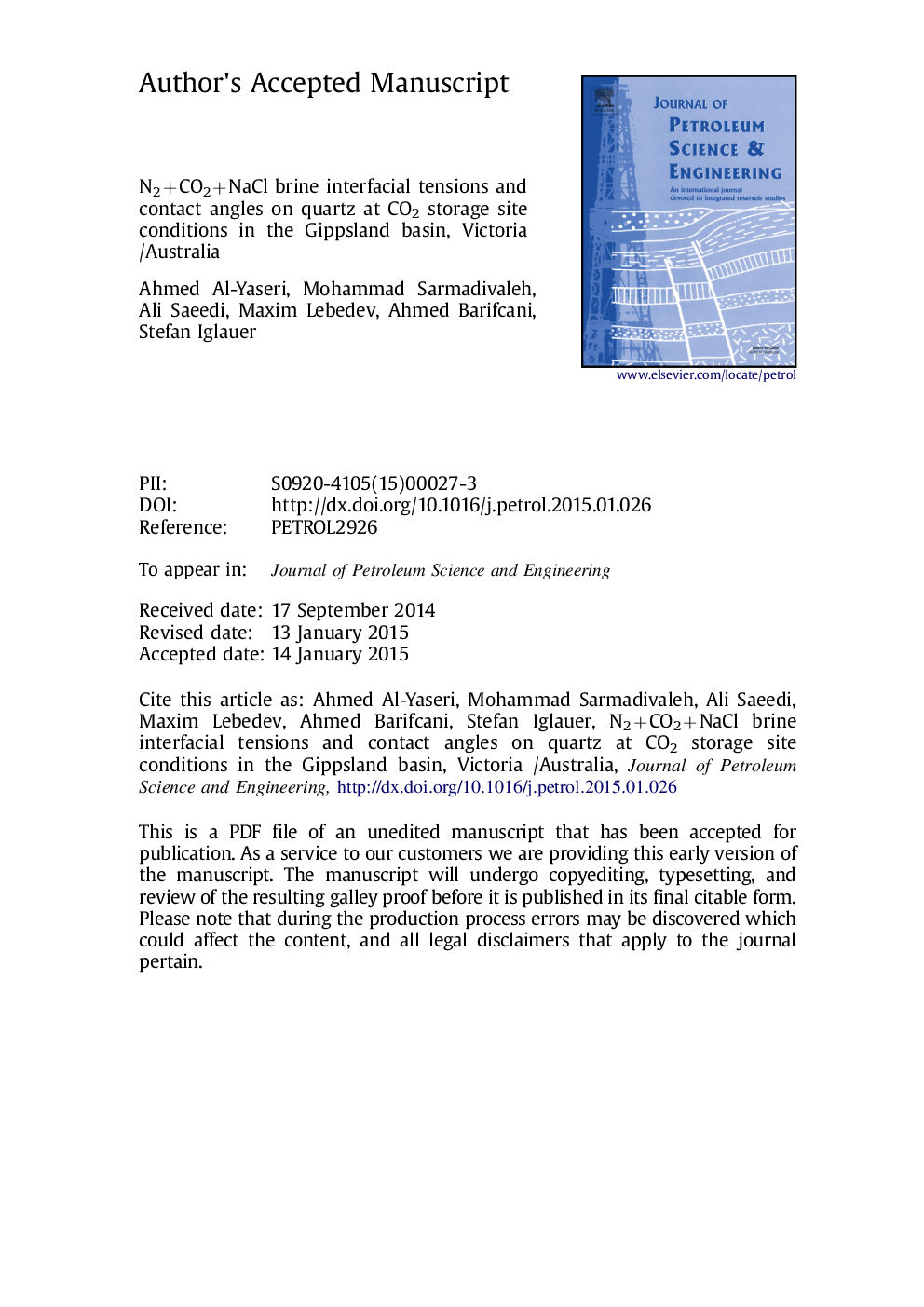| Article ID | Journal | Published Year | Pages | File Type |
|---|---|---|---|---|
| 8126611 | Journal of Petroleum Science and Engineering | 2015 | 18 Pages |
Abstract
In this context the State of Victoria (southeast Australia) is reviewing the suitability of Victorian sedimentary basins as CO2 sinks. The main focus is on the Gippsland basin, which has been positively evaluated from a geological point of view. Now it is necessary to assess the storage capacity of the formation and thus the intimately related fluid-fluid-rock properties. We therefore conducted interfacial tension and contact angle measurements at the prevailing storage conditions (13 MPa, 333 K); as a result, we show that CO2 has a relatively high water contact angle (θ=47°), while lower θ values were measured for N2 (θ=40.6°=47°) and for a 50 mol% CO2+50 mol% N2 mixture (θ=33.9°). Consequently all systems were weakly water-wet. This implies that residual and structural trapping capacities are reduced; however, both mechanisms should work adequately. Specifically, we predict that a CO2 column height of ~698 m can be permanently immobilized beneath the caprock.
Related Topics
Physical Sciences and Engineering
Earth and Planetary Sciences
Economic Geology
Authors
Ahmed Al-Yaseri, Mohammad Sarmadivaleh, Ali Saeedi, Maxim Lebedev, Ahmed Barifcani, Stefan Iglauer,
